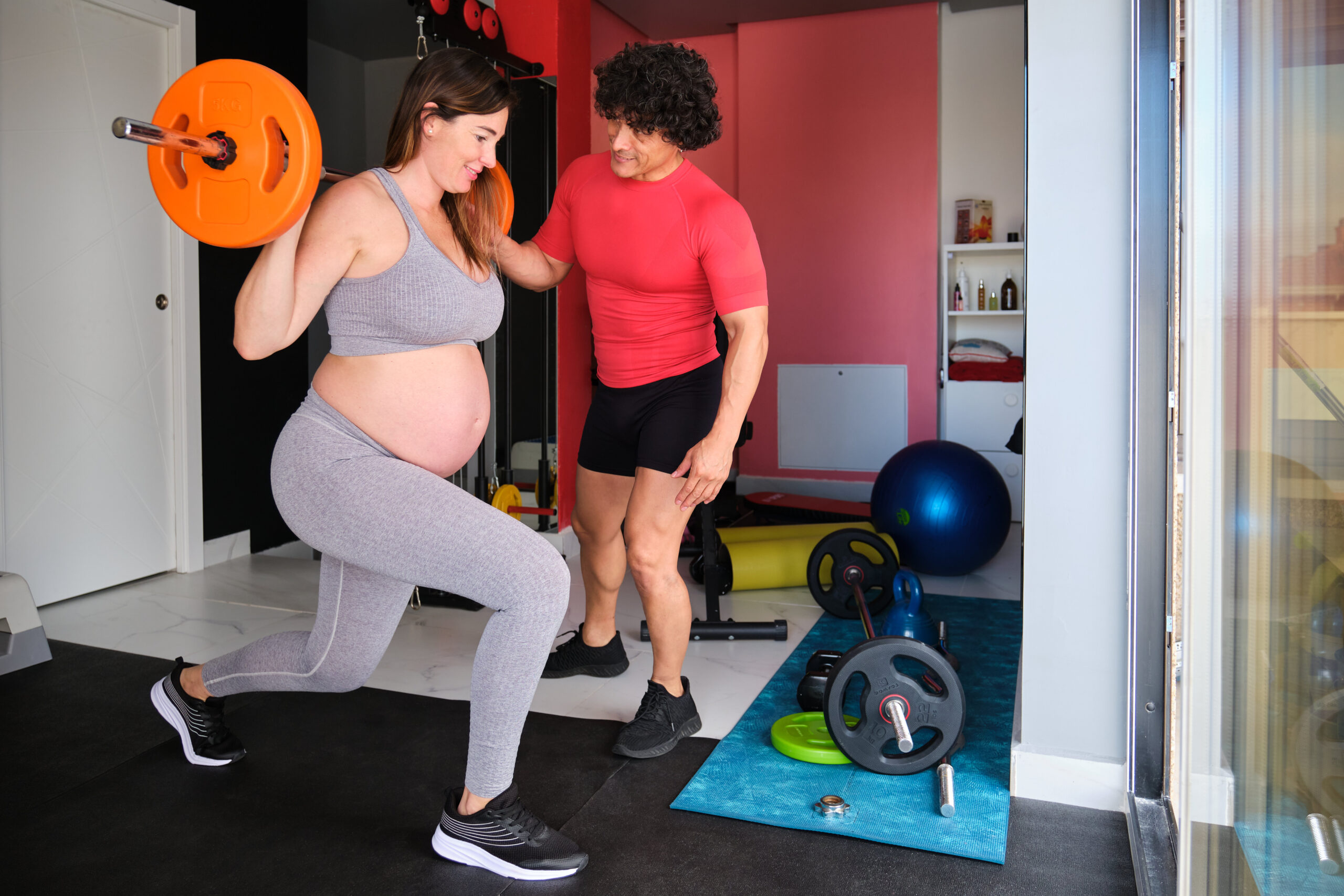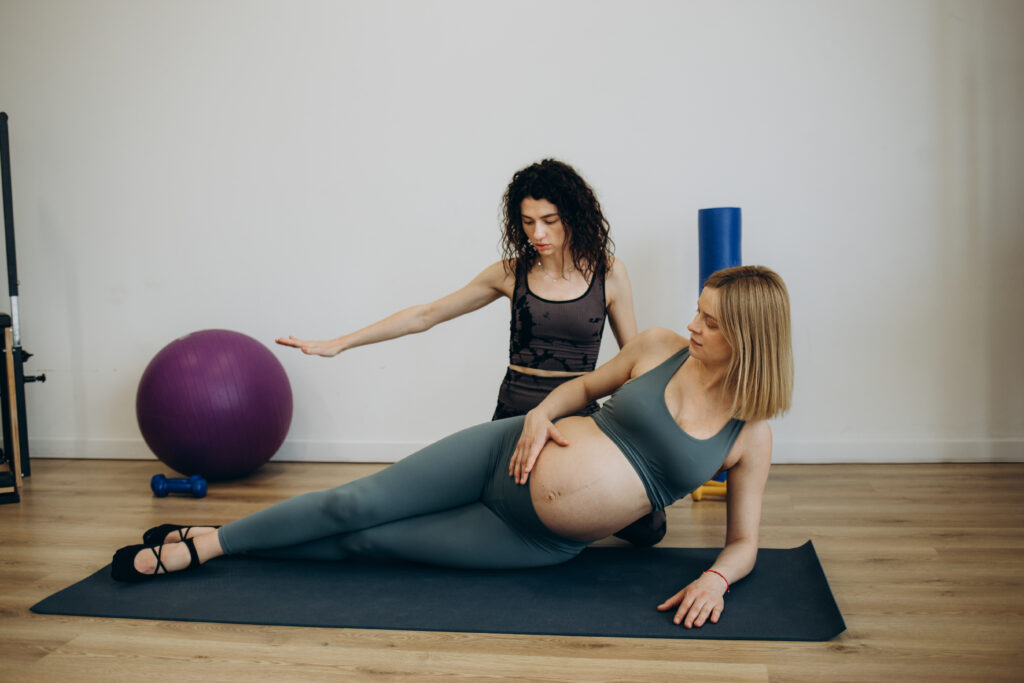
Categories
The Benefits of Exercise During Pregnancy: Debunking Myths and Embracing Health
Did you know that 64% of pregnant women surveyed have experienced nervousness related to physical activity? Understandably, their main concern was whether exercise could cause harm to them or their baby. This is a common worry, but it often stems from misconceptions about the impact of exercise during pregnancy. Let’s delve into the truth about prenatal workouts and how they can benefit both mother and baby.

Understanding the Concerns
It’s perfectly normal for expectant mothers to feel apprehensive about engaging in physical activity. Pregnancy brings about significant changes in the body, and the well-being of the baby is always a top priority. However, it’s essential to separate fact from fiction. Many women believe that exercise could potentially harm their pregnancy, but the reality is quite the opposite.
The Truth About Prenatal Exercise
What if I told you that implementing a prenatal workout routine has numerous benefits and that there is zero evidence to suggest that exercise causes any harm to either the mother or the baby? It’s true. In fact, leading health authorities, including the government, actively encourage 150 minutes of moderate-intensity activity each week throughout a healthy pregnancy. They even recommend resistance training twice a week. This guidance presents a perfect opportunity to adopt positive and healthy lifestyle changes during pregnancy.
Exceptions to the Rule
While exercise is generally safe and beneficial during pregnancy, there are some exceptions. Activities such as scuba diving, contact sports, or any activity with a high risk of falling should be avoided. Additionally, every woman and every pregnancy is different, so it’s crucial to get the green light from your healthcare professional too.
The T2FIT Experience
At T2FIT, we have trained numerous women throughout their pregnancies. Our clients have reported feeling more energized during daily activities, stronger, fitter, better in themselves, experiencing less back pain, less fatigue, and even an improved ability to labour for longer. These benefits highlight the importance of maintaining physical activity during pregnancy.
The Logic Behind Prenatal Exercise
Given the physical demands that pregnancy and motherhood place on the body—lifting, carrying, pushing, pulling, and labour itself—strengthening your major muscle groups in preparation makes perfect sense. Exercise can help you build the strength and endurance needed to navigate these challenges more effectively.
Top 5 Reasons to Exercise During Pregnancy
If you’re still on the fence about incorporating exercise into your pregnancy routine, here are five compelling reasons to get started:
- Healthy Weight Gain: Exercise helps promote healthy weight gain during pregnancy, which is crucial for both maternal and fetal health.
- Reduced Risk of Gestational Diabetes: Regular physical activity can significantly reduce the likelihood of developing gestational diabetes, a common pregnancy complication.
- Lower Blood Pressure: Exercise decreases the risk of high blood pressure and preeclampsia, conditions that can pose serious risks during pregnancy.
- Improved Sleep and Mood: Physical activity improves sleep quality and boosts mood by releasing endorphins.
- Enhanced Cardiovascular Fitness and Strength: Increased cardiovascular fitness, muscular strength, and endurance make you better equipped for labour and the physical demands of motherhood.
These are just a few of the many benefits of prenatal exercise. The full list is much longer, encompassing various physical and psychological advantages.
The Role of Exercise in Managing Pregnancy Symptoms
Exercise can also help manage some common pregnancy symptoms. For instance, it can alleviate back pain, improve posture, and reduce swelling in the legs. Regular physical activity helps keep the body mobile and strong, which can prevent or reduce the severity of these discomforts.
Creating a Safe and Effective Prenatal Workout Routine
When creating a prenatal workout routine, it’s important to focus on activities that are safe and effective. Here are some tips to help you get started:
- Strength Training: Incorporate resistance training to strengthen your muscles. Focus on exercises that target major muscle groups and help improve overall stability and posture.
- Choose Low-Impact Activities: Activities such as walking, swimming, and prenatal yoga and pilates are excellent choices. Our effort levels should be a 7 out of 10 or below – if you can talk as you exercise then you’re on to a winner.
- Pelvic Floor Exercises: Prioritising the connection between your breathwork and pelvic floor engagement throughout your pregnancy is also a must. Yes, we can use kegels, but being functional is key so try to coordinate your engagement with squats, lunges, hinges, pushes, pulls, carries – all movements you perform all day everyday.
- Listen to Your Body: Pay attention to how your body feels during and after exercise. If you experience any pain, discomfort or symptoms consult your healthcare provider.
- Stay Hydrated and Nourished: Drink plenty of water before, during, and after your workouts. Ensure you’re eating a balanced diet to fuel your body and support your exercise routine.
- Adapt as Needed: As your pregnancy progresses, you may need to modify your exercise routine. Certain activities may become more challenging, and it’s important to adapt your workouts to your changing body.
Professional Guidance and Support
Working with a qualified fitness professional who has experience with prenatal exercise can be incredibly beneficial. They can help tailor a workout program to your specific needs, ensure you’re performing exercises safely, and provide motivation and support throughout your pregnancy.
Listening to Your Body
At the end of the day, it’s important to listen to your body, communicate with a qualified professional, and make adaptations when necessary. Every pregnancy is unique, and what works for one person may not be suitable for another. Pay attention to your body’s signals and adjust your activity level accordingly.
The Psychological Benefits of Prenatal Exercise
Exercise is not only beneficial for physical health but also for mental well-being. Pregnancy can bring about a range of emotions, from joy and excitement to anxiety and stress. Regular physical activity can help manage these emotions by releasing endorphins, which are natural mood lifters. As we know, exercise also boosts self-esteem and confidence too.
Preparing for Labour and Delivery
One of the most significant benefits of prenatal exercise is preparing the body for labour and delivery. Labour is a physically demanding process, and being in good physical condition can make a big difference. Strong muscles, good endurance, and cardiovascular fitness can contribute to a smoother labour experience and may even reduce the duration of labour.
Postpartum Recovery
The benefits of prenatal exercise extend beyond pregnancy. Women who remain active during pregnancy often find that they recover more effectively postpartum. Exercise helps maintain muscular endurance and strength, mobility, and cardiovascular health, all of which contribute to a more effective recovery. Additionally, the discipline and habits formed during pregnancy can make it easier to continue with a fitness routine after the baby is born.
Building a Supportive Community
Engaging in prenatal exercise classes can also help build a sense of community. Connecting with other expectant mothers who are experiencing similar journeys can provide support and encouragement. Sharing experiences, challenges, and successes can make the pregnancy experience more enjoyable and less isolating.
Final Thoughts
Implementing a prenatal workout routine is one of the best decisions you can make for your health and the health of your baby. Despite common concerns, there is overwhelming evidence that exercise during pregnancy is safe and beneficial. By promoting healthy weight gain, reducing the risk of gestational diabetes and high blood pressure, improving sleep and mood, and enhancing cardiovascular fitness and strength, exercise sets the stage for a healthier pregnancy, smoother labour, and quicker postpartum recovery.
Remember, every woman and every pregnancy is unique. Always consult with your healthcare provider before starting or continuing an exercise routine during pregnancy. Listen to your body, make necessary adaptations, and seek professional guidance when needed. With the right approach, you can enjoy the many benefits of staying active during this special time in your life.
At T2FIT, we are committed to supporting women through their pregnancy journeys with safe and effective fitness programs tailored to their needs. We believe that with the right support and information, every woman can experience the transformative power of prenatal exercise. You’re already doing an amazing job by considering how to best take care of yourself and your baby. Embrace the journey, stay active, and enjoy the benefits of a healthy, active pregnancy.
